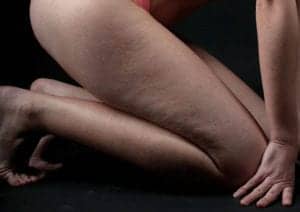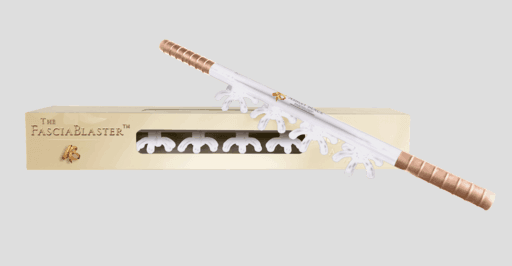Like this video? Subscribe to our YouTube channel by clicking here.
As a child in a small Alabama town, Ashley Black was diagnosed with Juvenile Rheumatoid Arthritis (JRA). Her life, the doctors predicted, would be full of debilitating pain and health complications — by the age 25 she was to be confined to a wheelchair.
“I just remember thinking from a very young age ‘how are you going to tell me what my own fate is?’,” Black said.

Even as a child, she was not one to give up or succumb to a life of pain and missed potential. Through a combination of therapies and physical activity — including stretching and strength training — she was able to manage flare-ups and pain. By the time she entered college, where she studied Engineering, she grew to love sports and became a competitive athlete in dancing and cheering.
The quality of her life only continued to improve — in her early 20s she was at her physical peak and even stopped taking the medications she had been prescribed since childhood.
But that would all change in her mid-20s when her second child was born. Not long after giving birth, Black underwent a routine procedure and contracted a deadly staph infection, which only 7 percent of infected people survive. When she was released from the hospital, Black was hooked up to a morphine pump, had a central line of antibiotics to her heart, and was emaciated from the toll of the staph infection. Once again, doctors predicted she would spend the rest of her life disabled and on pain management medication.
“It was a near death experience,” Black said. “I just got a completely new perspective on how precious life is and how easily it can be taken away from you.”
Again, with the odds stacked against her, Black persisted. She immersed herself in studying medicine and human anatomy — and it paid off.
“After a really long personal journey, seeking out Eastern [medicine], Western [medicine], alternative [medicine], really anything that I thought would work,” Black said. “There was definitely a moment in time where I realized there’s not a solution, so I’m going to have to go invent one.”
After carefully studying her own body, Black realized that her limitations and problems were due to the fascia — a network of fibrous connective tissues right below the skin that connects and covers organs, joints and muscles.
The fascia supports the musculoskeletal system and is loaded with sensory neurons that help the different muscles in your body communicate with one another. It essentially tells your body when to get up and move around or when to stretch your arms. The fascia, as Black discovered, is a powerful support system in the body which requires attention and care.
“If you’re dehydrated, suffer an injury, or perform any kind of high impact activity, this can cause the fascia to clamp up and adhere to itself and other structures in the body, such as muscles, bones and skin,” Black said to Refinery29.

However, when you have distortions or adhesions in the fascia, it can cause poor blood flow and limited flexibility in addition to other physical problems. A distorted fascia may lead to tightness or pain in your body. The fascia’s overarching impact on the body does not end there — that stubborn cellulite so many people struggle with is actually just fat building up and pushing through the webbed fascia, appearing as dents and dimples on the skin.
“In modern medicine, we don’t have all the explanations or knowledge of exactly what fascia is, but we do know is that some people get adhesions to fascia and tissue, which cause irritation and pain,” explained Charles Kim, MD, assistant professor in the Departments of Rehabilitation Medicine and Anesthesiology, Perioperative Care and Pain Medicine at NYU Langone’s Center for Musculoskeletal Care. “Physical therapists use myofascial — which means muscle and fascia — release methods to break up the fascia.”
Foam rolling is one popular way to relieve this tightness at home, but it does not get to the core of the issue because it only compresses the tissue and rolls over the fascia. Recognizing this limitation, Black decided she needed to create a more effective at-home tool to massage the fascia. Enter Black’s FasciaBlaster — a stick with pronged claws made specifically to target the fascia.

“Imagine your hair is messy and matted, and you’re just trying to smooth it over with your palms,” Black said. “Now imagine you have a hairbrush that actually combs out the knots. Which will leave your hair smooth and knot-free?”
The body’s fascia has three layers, and Black’s invention is meant to get through to each of them. Black recommends to vigorously rub the FasciaBlaster on a specific area of your body — like where cellulite is present or you experience pain — for about five minutes up to four times a week. Black warns that you may bruise using the FasciaBlaster, but to not worry — bruising is just part of the healing and restoration process.
“The bruise [from the FasciaBlaster] is not like a blunt-trauma bruise, it’s not an injury,” Black explained in a video. “When you pull apart fascial adhesion or restore fascia it flushes blood to that area.”
At first, Black, who owned sports therapy clinics at the time, gave the FasciaBlaster to her athlete clients to help them with flexibility and pain relief. Soon the family and friends of these pro-athletes started to use the FasciaBlaster as well. One girlfriend of a professional baseball player used the FasciaBlaster and noticed that it helped significantly reduce her cellulite.
Not only did Black’s breakthrough device reduce pain and improve muscle performance, but also broke down fat and diminished the look of cellulite. Black realized her product was not just for athletes anymore, and that most people could actually benefit from it.
“I’m going to help people take control,” Black said in a video. “Bust down the walls of the clinic and move out to the public and deliver this information that’s going to change the world.”
Danielle Tarasiuk is a multimedia journalist based in Los Angeles. Her work has been published on AllDay.com, Yahoo! Sports, KCET, and NPR-affiliate stations KPCC and KCRW. She’s a proud Sarah Lawrence College and USC Annenberg alumn.


![How To: ‘Fix’ Crepey Skin [Watch]](https://cdn.vitalupdates.com/wp-content/uploads/2017/05/bhmdad.png)












